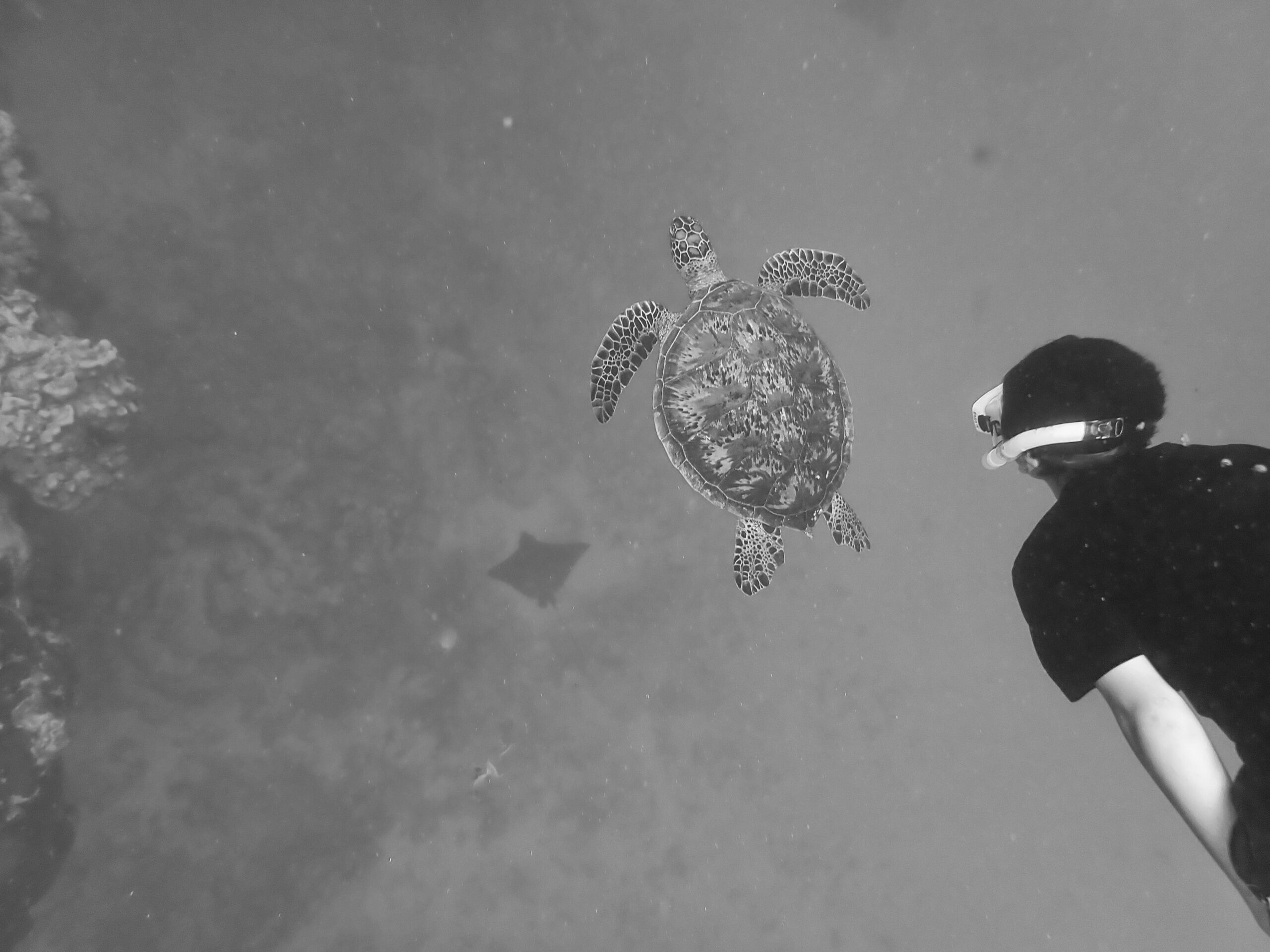Saturday 4 November 2023 | Written by Te Ipukarea Society | Published in Environment, National

Mapu participation in citizen science in Ava'avaroa passage. TIS/23110350
Within the southern and northern Cook Islands, sea turtles are sighted, mainly in the lagoon, and passage areas, but there is limited information on exactly how many turtles are residential, and how many are passing by on their migratory journey.
Earlier in the year, Te Ipukarea Society launched a citizen science monitoring programme, to engage people in turtle conservation efforts, and allow the community to be a part of collecting data that contributes to tracking individual turtle movements.
The monitoring programme is simple. It is not invasive, in that it does not require tags being attached to the turtle, which was the most common method of tracking turtles in the past.
This method requires the use of photographs of individual turtles' unique facial patterns, preferably the left side of their face for consistency.
Photos can be sent to Te Ipukarea Society, who then upload them to a pattern recognition software. This software package keeps track of new turtles being introduced to the database and old turtles already recorded in the database.
Other researchers in other parts of the Pacific can also consult this database to see if any of our turtles end up in their waters, and vice versa. Information will also be made available to the Pacific Regional Environment Program (SPREP) to add to their turtle research endeavours.
During the most recent senior school holiday programme which we held in conjunction with Kōrero o te ‘Ōrau, we took students from the Pa Enua and Rarotonga to snorkel in Ava’avaroa Passage to demonstrate how the citizen science turtle monitoring programme works.
For many of the students it was their first time swimming in a passage, let alone seeing a turtle in its natural element. The students were split into groups and given slates and underwater paper to note down observations made on turtle characteristics, overall count of turtles seen, as well as using their underwater camera skills to snap the turtle's best side of their face; for our purposes this is the left side.
A demonstration on how photos are uploaded and cross checked using the pattern recognition software was also delivered to the students.
The majority of the students on the holiday programme, were in fact from around the Pa Enua, which added even more value to the programme.
Through the programme, students are now able to differentiate Green Turtles from Hawksbill Turtles, the two species most commonly seen in the Ava’avaroa Passage.
Having now been swimming with turtles, and participating in the monitoring survey, the hope is that these students take this knowledge back with them, and potentially participate in the programme from their home islands.
This will give us an even broader understanding of movement of turtles throughout the Cook Islands.
Based on current data received, which is predominantly made up of information coming from Ava’avaroa Passage, it has been interesting to note that a number of turtles found within this passage are residential turtles (live within this area). For example, one turtle recorded during the recent school holiday programme was also listed in the database from 2021.
To get more of a historic trend, Te Ipukarea Society has reached out to some of the local dive operators, requesting both old and new photos, including a good image of the left hand side of the turtle’s heads, the date the image was taken and site of location.
We have also reached out to visitors through social media to share any photos to contribute to new tracking data for this year.
This research project has been funded by the Seventh Generation Fund for Indigenous Peoples.